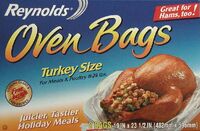Redirect to:
The main issues with plastics for box cooker windows are availability and durability. An SCI board member is a retired engineer who worked for the 3M company. His specialty was designing plastic films that could be used as windows for solar box cookers. It is ultraviolet light that plays the most havoc with the chemistry of clear, plastic films, so he tried to develop plastics that could endure the ultraviolet light. The best he got was a clear plastic that would last for a year or two before it got too yellowed and brittle. However, 3M never brought that product to market, and even if it had, there is little reason to think it would be available in stores in Rwanda, for example. The point of this little story really is that plastics vary greatly in how well they hold up as box cooker windows. You can investigate sources of plastics in the capital, visit the major suppliers, talk to them about the durability and yellowing issues, and then obtain and test the most promising options. You may find that there are relatively affordable plastics that will hold up long enough to be economically and environmentally cost effective.
In the USA, and possibly other parts of the world, oven cooking bags are available in most supermarkets. These bags are made to withstand temperatures up to 600F.
Polypropylene and high density polyethylene (HDPE) are both used in autoclaves which sterilize medical instruments at much higher temperatures than solar cookers normally get. Thus, these plastics are usually available in most countries. HDPE is also widely used for grocery bags worldwide--not the soft, clear plastic, but the crisp, "noisy," slightly milky transparent bags. These HDPE bags are generally quite inexpensive. If nearly transparent, these work almost as well as the much more expensive "oven roasting bags" made of polyester or nylon. The thickness of the plastic film does not affect the heating of the oven, but may affect its strength and lifetime.
See also[]
- Plastic sheets may offer an alternative to plastic bags
- Plastic bags
- Greenhouse Enclosure Comparison - Teong Tan

